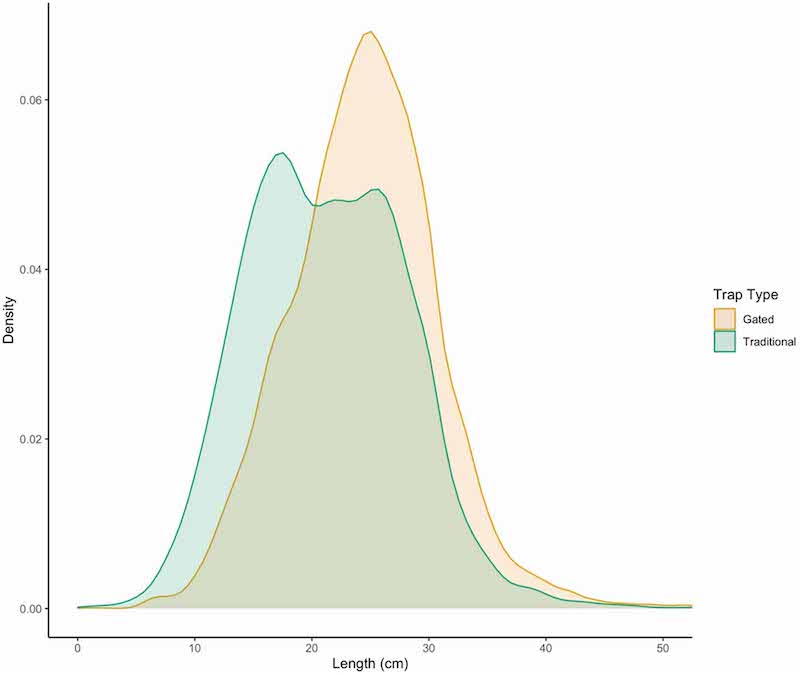
Authors: Bryan P. Galligan, Timothy R. McClanahan, and Austin T. Humphries
Abstract
Coral reef artisanal fisheries are an important source of nutrition and economic wellbeing for coastal communities, but their management is subject to conflicts and tradeoffs between short-term food security benefits and long-term ecological function. One potential tradeoff is between nutrient capture and fish yields, where targeting small, nutrient-dense species may be more valuable for food security than maximizing fish yields, which is more closely aligned with supporting biodiversity and ecological function. We explored these potential tradeoffs by comparing two similar gears: traditional African basket traps and traps modified with an escape gap. Traps without escape gaps captured a higher frequency of fish with body sizes below their estimated lengths at maximum sustainable yield than gated traps. Estimates of nutrient yields for six micronutrients among the 208 captured species indicated high hump-shaped relationships for gated traps and low and linear positive relationships for traditional traps. Maximum nutrients in gated traps frequently corresponded to body sizes at maximum sustainable yield. Daily capture rates of nutrients were above daily needs more often in gated than traditional traps, but calcium values were low in both trap designs. Gated traps were more likely to capture species with unique and potentially important functional traits, including browsing herbivores, which could have negative effects on ecological functions and reef recovery. However, gated traps also catch fewer immature fish and fewer predators. Our results indicate that nutrient yields can be maximized while using a gear that captures larger and more sustainable body sizes in coral reef artisanal fisheries. Preferential targeting of nutrient-dense fishes is only one of many metrics for evaluating a nutrition-centered management strategy and may only be a management target in specific contexts.
Read the full publication at https://iopscience.iop.org/article/10.1088/1748-9326/aca77e/meta.
Published January 4, 2023
